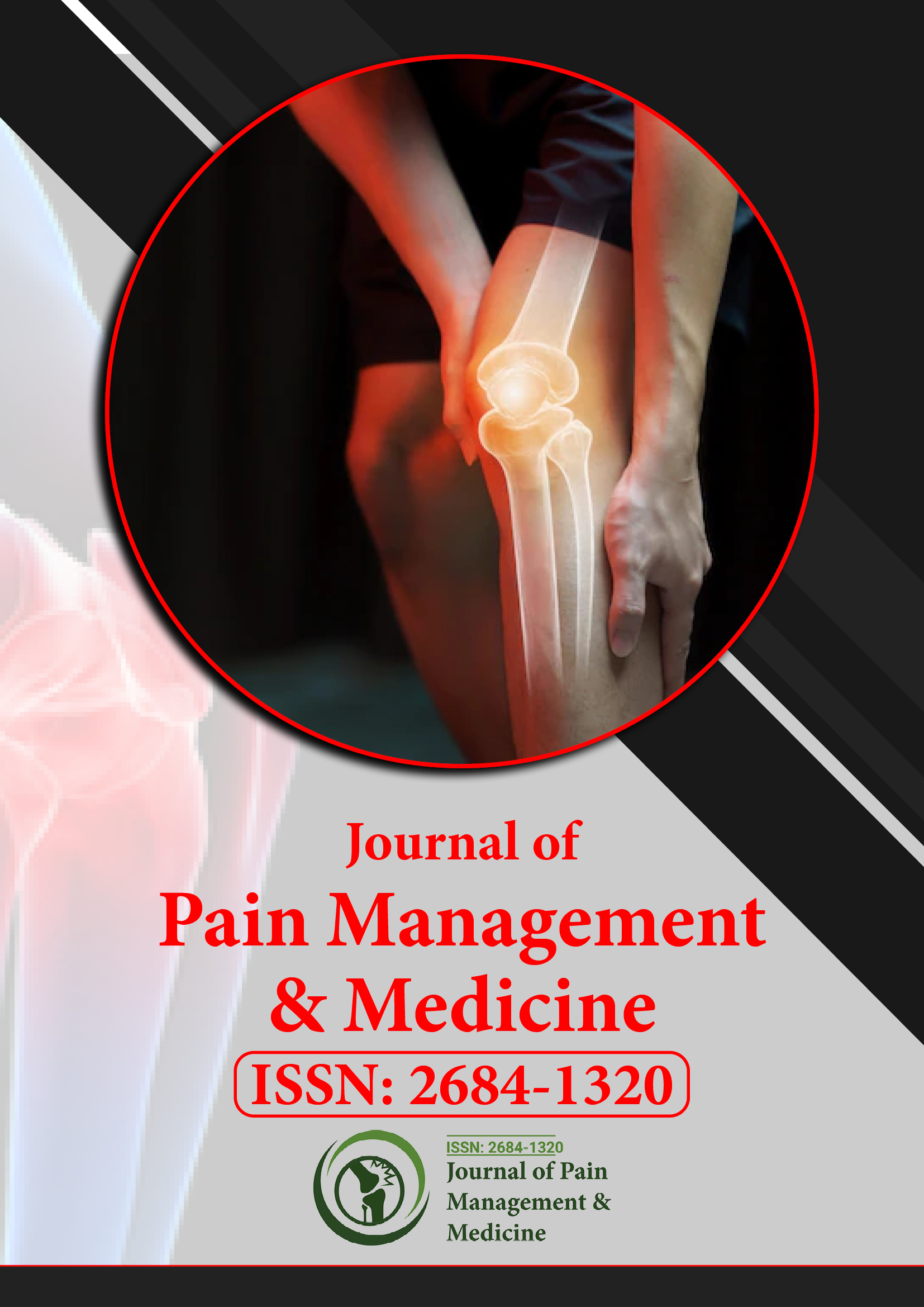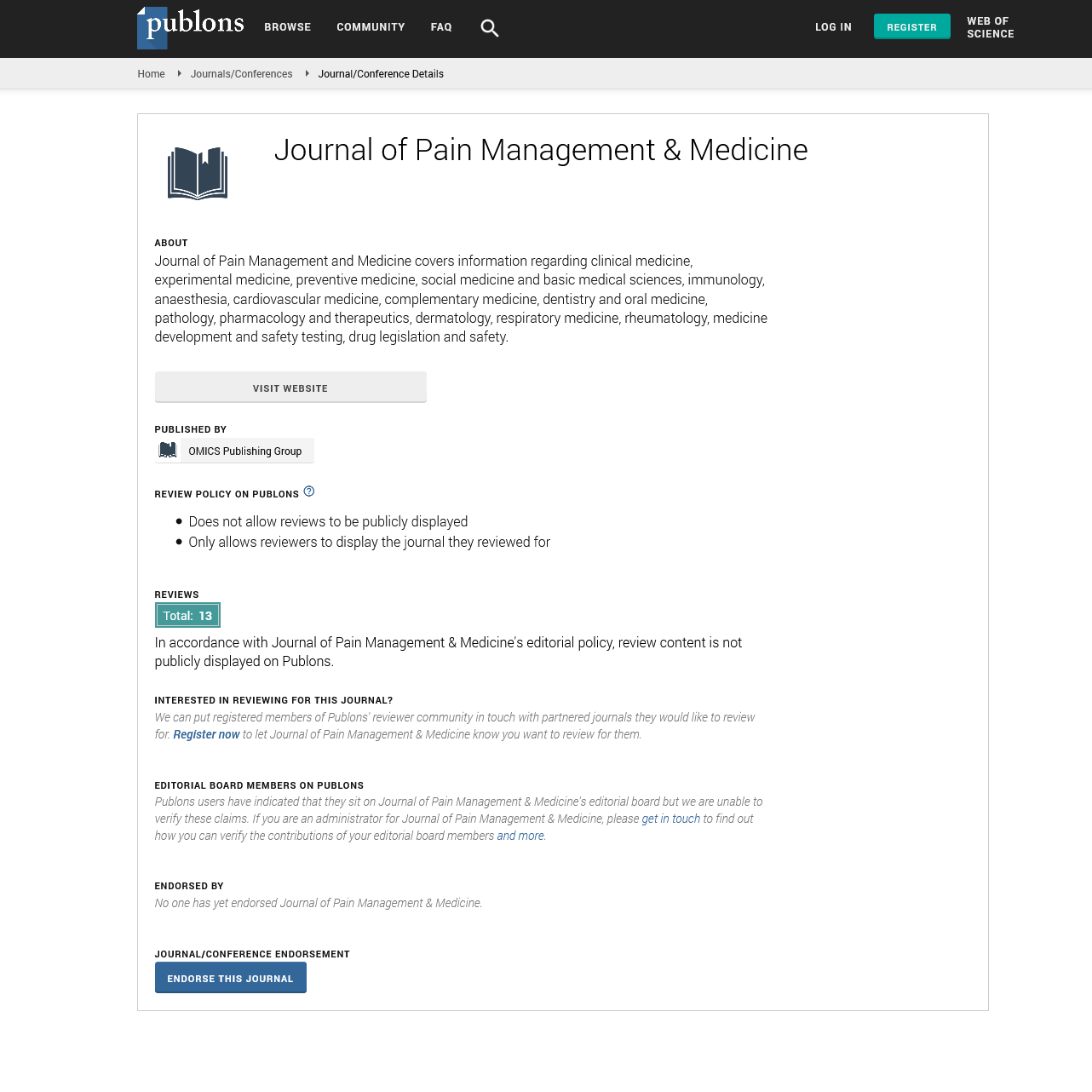Indexed In
- RefSeek
- Hamdard University
- EBSCO A-Z
- Publons
- Euro Pub
- Google Scholar
- Quality Open Access Market
Useful Links
Share This Page
Journal Flyer

Open Access Journals
- Agri and Aquaculture
- Biochemistry
- Bioinformatics & Systems Biology
- Business & Management
- Chemistry
- Clinical Sciences
- Engineering
- Food & Nutrition
- General Science
- Genetics & Molecular Biology
- Immunology & Microbiology
- Medical Sciences
- Neuroscience & Psychology
- Nursing & Health Care
- Pharmaceutical Sciences
Opinion Article - (2024) Volume 10, Issue 6
Rehabilitation Medicine: Principles, Applications and Innovations
Michael Sebastian*Received: 28-Oct-2024, Manuscript No. JPMME-24-27632; Editor assigned: 30-Oct-2024, Pre QC No. JPMME-24-27632 (PQ); Reviewed: 13-Nov-2024, QC No. JPMME-24-27632; Revised: 20-Nov-2024, Manuscript No. JPMME-24-27632 (R); Published: 29-Nov-2024, DOI: 10.35248/2684-1320.24.10.299
Description
Rehabilitation medicine, also known as Physical Medicine and Rehabilitation (PM&R), is an essential field of healthcare determined to improving function and improving the quality of life for individuals affected by physical impairments, injuries or chronic conditions. This multidisciplinary specialty addresses the physical, psychological, social and vocational dimensions of recovery, enabling patients to regain independence and establish successful lives. With its patient-centered approach and emphasis on functionality, rehabilitation medicine has become a cornerstone of modern healthcare. Rehabilitation medicine, for its patient-centered method and focus on effectiveness, has established as the foundation in modern medicine.
The primary principle of rehabilitation medicine is to maximize a person's strengths rather than focusing mainly on their limitations. It recognizes that health is more than the prevention of disease, emphasizing the value of mobility, communication and emotional well-being. Rehabilitation medicine provides a comprehensive technique, integrating medical, physical, psychological and social interventions optimized to the individual's needs.
Principles of rehabilitation medicine
Rehabilitation medicine is determined by principles that ensure a patient-centered, holistic and focused on objectives technique. Effective rehabilitation requires a team of specialists, including physiatrists, physical therapists, occupational therapists, speechlanguage pathologists, psychologists and social workers. This collaborative effort ensures comprehensive care. Every patient’s rehabilitation journey is unique. Care plans are developed to the specific objectives, needs and capabilities of each individual. Rehabilitation prioritizes functional outcomes, such as walking, dressing or returning to work, across therapeutic objectives. Rehabilitation spans acute, sub-acute and long-term care, addressing recovery at every stage. Patients are provided with opportunities to actively participate in their rehabilitation, which improves motivation and adherence to therapy.
Applications of rehabilitation medicine
Rehabilitation medicine serves a wide range of disorders, resulting in improved outcomes across multiple medical specialties.
Neurological rehabilitation: Conditions such as stroke, Traumatic Brain Injury (TBI), spinal cord injuries, Multiple Sclerosis (MS) and Parkinson’s diseases are frequently result in severe disabilities. Rehabilitation is the process of recovering physical abilities, cognitive capabilities and mobility in daily activities.
Musculoskeletal rehabilitation: Injuries such as fractures, ligament tears and chronic conditions including arthritis are managed through therapies aimed at pain relief, mobility restoration and strength building.
Cardiopulmonary rehabilitation: Patients recovering from heart attacks, heart surgeries or chronic respiratory diseases benefit from programs that improve endurance, strength and overall cardiovascular health.
Pediatric rehabilitation: Children with developmental disorders, cerebral palsy or congenital anomalies receive therapies to enhance motor skills, communication and social interaction.
Cancer rehabilitation: Cancer survivors frequently face physical and psychological challenges, including fatigue, pain and lymphedema. Rehabilitation can help to restore function and improve an individual's quality of life.
Pain management: A chronic pain condition includes fibromyalgia or lower back pain is addressed through multidisciplinary techniques using physical therapy, medication and psychological support.
Amputee rehabilitation: Patients who have had limbs amputated are directed through prosthetic training and adaption, providing patients to rebuild their movement and function.
Techniques and interventions: Rehabilitation medicine employs a wide range of techniques, technologies and interventions to accomplish its objectives.
Physical therapy: Physical therapy focuses on improving strength, flexibility, balance and endurance. Techniques include therapeutic exercises, manual therapy and modalities include ultrasound or electrical stimulation.
Occupational therapy: Occupational therapy helps patients regain the ability to perform daily activities, such as dressing, cooking or using adaptive tools, ensuring they can function independently.
Speech and language therapy: For patients with communication or swallowing difficulties, speech therapy provides targeted interventions to improve speech clarity, language skills and safe swallowing techniques.
Assistive devices and technology: Devices such as wheelchairs, prosthetics, orthotics and hearing helps to enhance mobility and communication. Advanced technologies such as robotic exoskeletons and brain-computer interfaces are revolutionizing rehabilitation.
Psychological support: Rehabilitation frequently addresses emotional and psychological challenges, providing counseling and managing methods for depression, anxiety or post-traumatic stress.
Citation: Sebastian M (2024). Rehabilitation Medicine: Principles, Applications and Innovations. J Pain Manage Med.10:299.
Copyright: © 2024 Sebastian M. This is an open access article distributed under the terms of the Creative Commons Attribution License, which permits unrestricted use, distribution and reproduction in any medium, provided the original author and source are credited.

